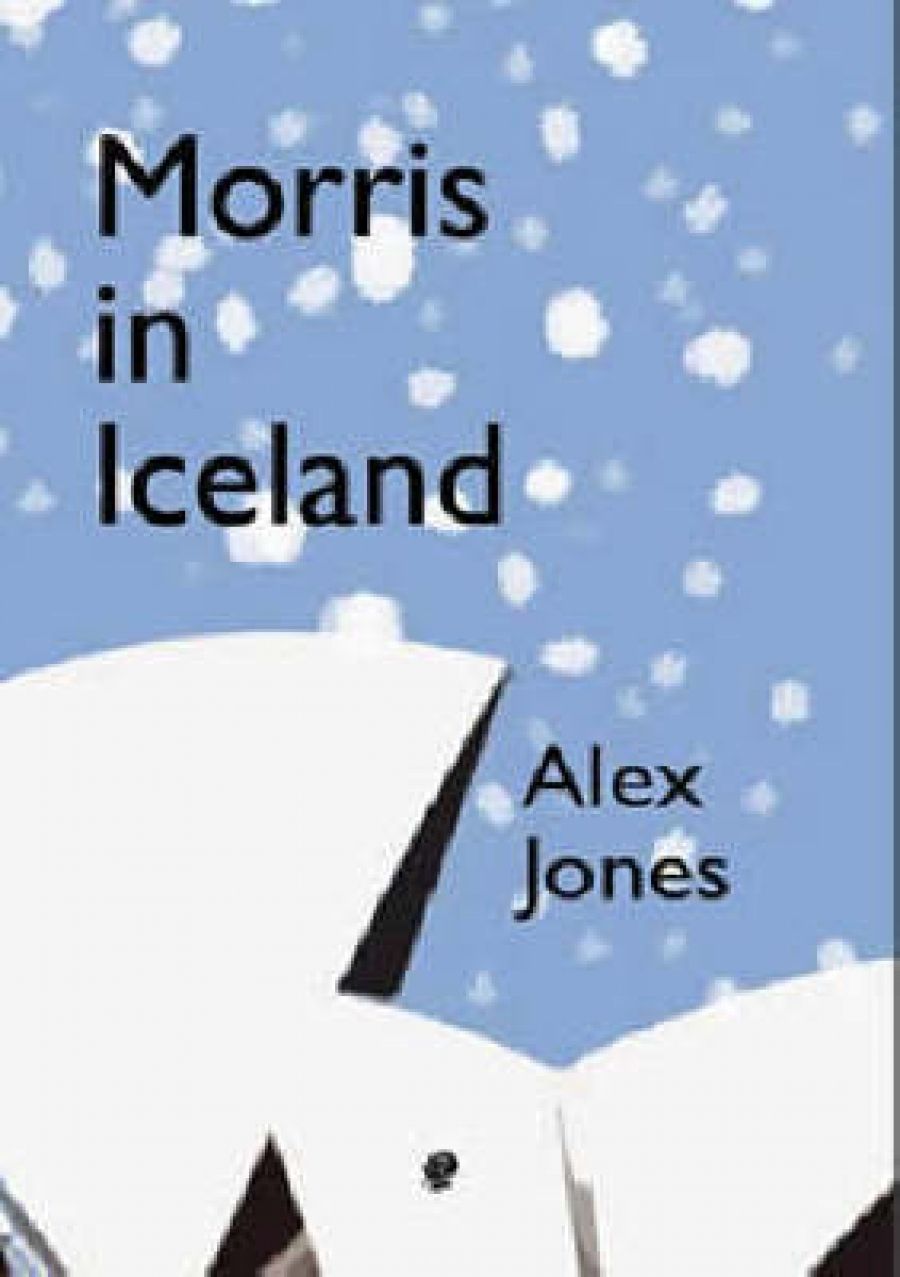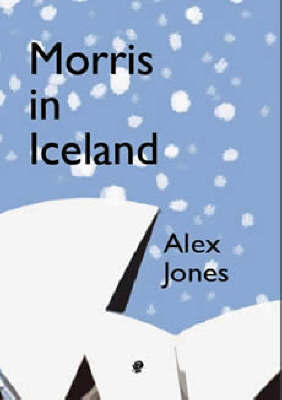
- Free Article: No
- Custom Article Title: Keeping up with Jones
- Review Article: Yes
- Article Title: Keeping up with Jones
- Online Only: No
- Custom Highlight Text:
When it came to Iceland, Monty Python, as always, had the properly irreverent idea. Their version of Njal’s Saga was a horrendous case of interrupted narrative. It took ten minutes for their ‘very exciting Icelandic saga’ to get started, bogged down as it was in endless biblical begetting, and when things did kick off, the whole sketch unwittingly collapsed into an extended advertisement for a sleepy British town named Malden.
- Book 1 Title: Morris in Iceland
- Book 1 Biblio: Puncher & Wattmann, $27 pb, 238 pp
- Book 1 Cover Small (400 x 600):

- Book 1 Cover (800 x 1200):

Morris In Iceland is a novel that not only at times resembles the Cambridge wags but embraces the medium with open arms. In the first twenty pages alone, Buffy, The Vampire Slayer, Cold Feet, Medium and The Biggest Loser are all mentioned. That these contemporary entertainments share page space with Dante and T.S. Eliot suggests the type of novel Jones has concocted on his second pass at the form – a dizzy and dizzying mixture of high and low, sombre and silly. The book, quite literally, is split in two.
Jones’s own Icelandic saga, and one half of his new novel, finds its basis in history, not literature: the English artistic all-rounder William Morris’s travels through Iceland in 1871. In a convincing reproduction of a vigorously romantic nineteenth-century prose style, Jones apes Morris’s experiences and thoughts in diaristic form. But this is the novel’s ancillary concern. The central narrative takes place in the more recognisable landscape of present-day Newtown. It is here that the unnamed narrator, an academic temporarily without a jet-setting wife, becomes involved in a modern operatic imagining of Morris’s journey, with the music of Björk and a hefty chunk of narrative theory to help him and his junior associates along on their way.
The novel has much in common with Jones’s first, Helen Garner and the Meaning of Everything (2006). Again, there is a nameless narrator hauntingly similar to Alex Jones, former academic and linguistic theorist; again, a wife going by the single initial of L.; again, repeated disquisitions on current television programming; again, frequent allusions and quotations; again, lengthy descriptions of cooking. Jones, clearly fond of the world created in his first book, has neither reproduced nor wholly rewritten. Giving his imagination a light shake, he has cast light, at a slightly different angle, over familiar terrain.
While knocking around Newtown mentally indexing Tennyson and keeping up with his favourite programmes, Morris In Iceland is a whimsical, peculiar but very enjoyable piece of work, an amusing, if less compelling, echo of Helen Garner. The parallel narrative is more problematic. Alternating with the present day, the historical diary soon tires, drawing energy from the light touch of contemporary concerns. That Jones can draw quotation and allusion frequently (often to the point of a complete narrative stasis) into the present moment, and is already able to find a place for Morris amongst the degraded modern sprawl, is enough. The tick-tock of inevitability sending us back to Iceland after a chat about Saussure and some pastry cooking creates a frustrating imbalance in the carefully poised novel.
The Morris diary certainly deserves some space in the novel thanks to the simultaneity of the narrator’s contemporary operatic adventure, but the question remains: how much space for a digression (and this in an already digressive book)? Unlike William Faulkner’s similar experiment in The Wild Palms (1939), the connection here is both obvious (the opera’s subject matter) and too wilfully obtuse – there isn’t enough in the alternate tale to warrant its length. Is it pastiche? The narrator’s own imaginary fancy?A serious piece of contrasting narrative? Whatever Jones’s intentions, its effect upon the novel is enervating.
There is also the curious and perplexing realisation that, after yet another description of tart-making, often the ideal guest at a dinner party might not be someone whom you want narrating a novel. The problem with the exceptionally smart is that they tend to notice things and point them out before the other strugglers of the world make the discovery for themselves. So it goes with Jones, whose narrator never does anything without finding a corresponding quote, and who never notices anything without adding emphasis for those in the cheap seats. If modernist stream of consciousness gives no help to the latecomer, Jones’s consciousness comes with fastidious footnotes. Here is our narrator pondering cutlery and crockery:
Then they are taken down afresh and laid on tables, open to experience, not knowing what may come upon them, till finally they find their function among the rituals of conviviality. Parables of the washing up, I thought, kitchen sink drama; it’s all here. What began in the merest physicality has transcended – transgendered – its origins; people may speak of the occasion still when the best of my plates are no more than glittering dust and painted fragments.
One yearns, a little shamefully, for a man of action, one unschooled in the ways of the world, someone who might learn something new by novel’s end. To use Pauline Kael’s immortal phrase, men like this ‘drive women into the arms of truck drivers’. This isn’t a case of anti-intellectualism. It’s about mixing the Dedalus with the Bloom, the brain with the belch.
Still, these are minor cavils, and ones that more contemporary fiction could bear to suffer. If lacking the freshness of Jones’s first novel, Morris In Iceland is still heady, wise, playful stuff. The price it pays for inhabiting so similar a world to its predecessor is the fate of any cook the morning after a feast; if it isn’t a masterpiece, it might have to pass under a filling but less satisfying name: leftovers.


Comments powered by CComment